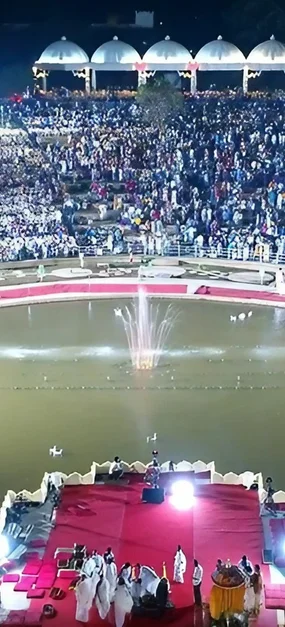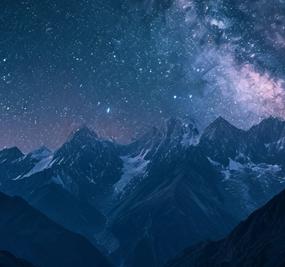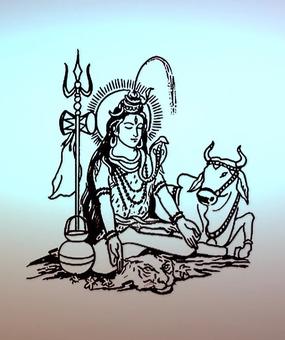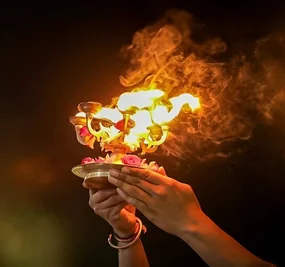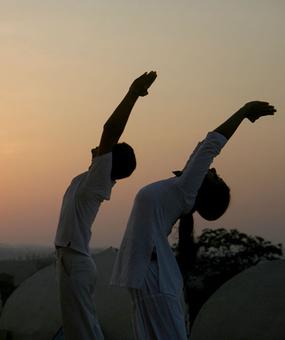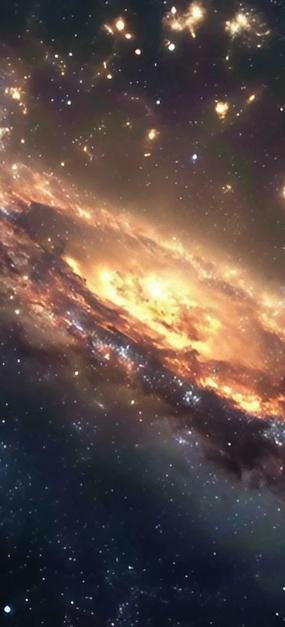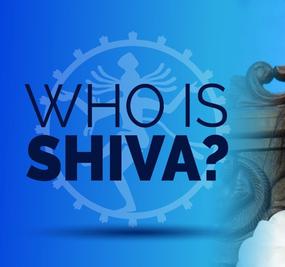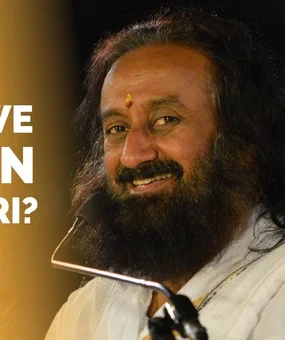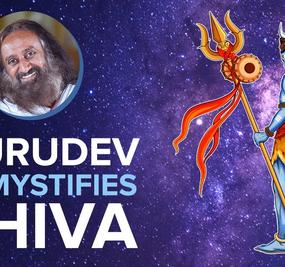Who is shiva?
Who is Shiva?
Is Lord Shiva someone sitting in some place?
What is Shiva?
Is he a form?
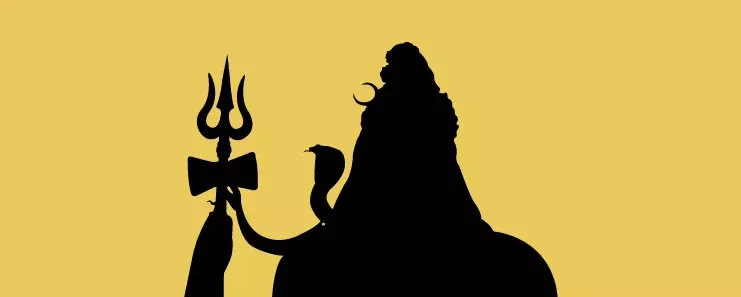
For centuries, historians and devotees have romanticized the image of Lord Shiva. A body smeared with ash, a tiger skin, a crescent moon, a snake around the neck, the third eye, matted hair, river Ganga flowing from the hair, a trident in one hand, a dumroo in the other, sometimes consumed in a cosmic dance and sometimes sitting still like a rock. Along with this, there are also 1008 names of God Shiva to describe his attributes.
To truly understand Shiva, it is vital to know that Shiva is not limited to three things: name, form and time. More importantly, Shiva is not a person sitting in some place or up in the sky.
What is the meaning of shiva?
Shiva is Sha + ee + Va
Sha stands for Shareeram or body
ee stands for eeshwari or life giving energy
Va stands for vayu or motion
Thus, Shiva represents the body with life and motion.
If the ‘ee’ is removed from Shiva, it gets reduced to sha+va = shava.
Shava means a lifeless body. Shiva is with the potential of life, whereas Shava is lifeless.
Which brings us to the deeper understanding that Shiva is life, Shiva is potential for life, Shiva is all encompassing – the universal soul or consciousness. Realizing this Shiva Tattva leads to Ananda or bliss.
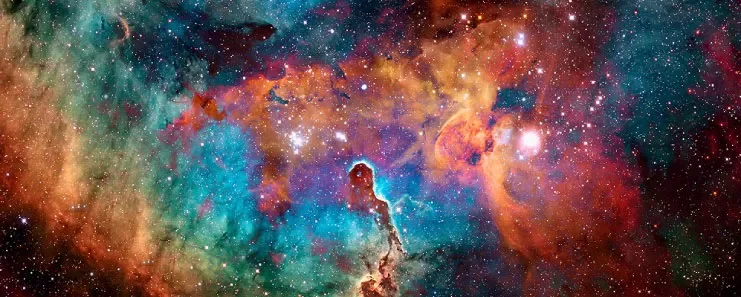
What is the nature of shiva?
The whole concept of Shiva is sublime. Our ancient folks beautifully categorized this sublimity into three states:
- Arupa: without form
- Rupa-Arupa: the formless form
- Sarupa: with form
The arupa state is where there is no form, shape or color, implying there was no space, no time, or no matter to use to describe the arupa state. Such a state is possible only when the Universe has not yet been created.
The arupa state of Shiva is that which is beyond manifestation. These following 6 distortions do not apply in this state:
- Adhi – Antha: beginning and end
- Sankocha – Vistara: contraction and expansion
- Prasarana – Abhisarana: spreading and converging
These characteristics are applicable only for the manifested creation. The arupa state is thus said to denote Shiva as Chaitanya or pure consciousness which exists but is still. This state is the source of all Creation and all divinities owe their origin to this state. Hence the name Mahadeva – the source of all divinities.
The Rupa-Arupa state is the formless manifesting into form or form emerging from form. This is a transitional state from sukshma (subtle) to sthoola (gross).
The Sarupa state is the one where Shiva manifests into multifarious forms. Sa means with or accompanied by. Thus, sarupa means with form or manifested state.
How can shiva be understood?
One of the places which speaks elaborately about Lord Shiva is Kashmir in India. The Kashmir Shaiva thought is considered very advanced even today. It was called Trika. As per Trika, Shiva can be understood to be of three states, hence the name Trika. To gain the knowledge of it, they recommended four steps:
- Anavopaya: disciplining the ego
- Anava: meditation
- Saktopaya: developing attention in silence
- Sambavopaya: freeing oneself from thought
Thus, Shiva represents the chain from subtle to gross to subtle and the ways to understand Shiva therefore require subtleness and meditation.
This is emphasized through description of Shiva:
“Shivam Shantham Advaitham Chaturtham
Manyante sa Atma Sa vigneyaha”
(That state which is beyond the three states of waking, dreaming and sleeping and which permeates them all is what is Shiva and is what is worth knowing.)
Since this state is beyond our comprehension or does not have a form that is cognizable or can be perceived, it is akin to formless. It can be referred to as Arupa as well and is commonly known as Turiya avastha, or the fourth state. In this state, the body is restful and the mind is in its highest awareness.
Shiva is from where everything has come, in which everything is sustained and everything dissolves. This is Shiva or the Shiva Tattva. There is no way that you can ever step out of Shiva at any time because the creation is made up of Shiva. Your mind, body, everything is made from the Shiva Tattva. That is why Shiva is called ‘Vishwaroopa’, which means that the entire universe is his form.
Why is shiva eternal?
There is a beautiful story related to God Shiva. Once upon a time, Brahma (the Creator of the Universe) and Vishnu (the Preserver of the Universe) wanted to find the answer to the question, ‘who is Shiva?’. They wanted to understand him completely. So Brahma said, “I will go and look for his head, and you find his feet.” For thousands of years, Vishnu went down and down to find Shiva’s feet but couldn’t find it. Brahma went up and up to find his head but couldn’t find that either.
The meaning here is, there are no feet and no head to Shiva. There is no beginning and no end to Shiva. Finally, they both met in the middle and agreed that they could not find Shiva. That is what the Shivalinga is all about. It is a symbolic representation of the infinite Shiva.
How big is shiva?
While Shiva is not a person, but if one has to see how big is the Shiva consciousness, then it can be said:
Brahmananda vyapta deha
The body of Shiva is beyond the galaxies. The whole universe is the body. All stars, nebulas make the hair, thousands of sun together the eyes. Water the stomach. The serpent is the mind. The world is full of millions of vibrations which are interconnected to mind, planets and even food. Everything is networked.
Rudrashtakam says:
Namami-shamishannirvan roopam, vibhum vyapakam brahma-ved swaroopam. Nijam nirgunam nirvikalpam niriham chidakashmakashvasam bhajeham
Meaning: it is the Lord, it is the most powerful, it is all over, spread everywhere. There is no place that it is not. It is that space, that consciousness where all the knowledge is present. It was never born and it has no attributes. It is a state of Samadhi where there is nothing, just the inner sky of consciousness. That is Shiva.
Shiva is the entire creation
Creation is a mix of opposite values – positive and negative attributes. The universe has fire and water, goodness and evil, and so on. Shiva is present in all opposing values. This is why Shiva is called Rudra (fierce) and at the same time, he is called Bholenath (the most innocent). He is called Sundaresha (beautiful) and also Aghora (terrifying). A famous Shiva prayer describes Shiva as Gowram (fiery), and in the same sentence, he is called Karunavataram (the embodiment of compassion).
What is mahashivratri?
As mentioned above, Shiva is the fourth state, which can be achieved through meditation. The possibility to go deeper into your being and attain that stillness, Samadhi and experience Shiva is higher on Mahashivratri. The night of Shiva.
Not so commonly known is the monthly celebration of Shivratri, which falls on the Krishna Paksha Chaturdasi every month or the night preceding the New Moon.
Mahashivratri or the Great Night of Shiva is celebrated annually on the Krishna Paksha Chaturdasi night in the penultimate month of the year, the month of Magha as per the Indian calendar.
This night is when we acknowledge and celebrate the Shiva principle or the Shiva Tattva within us all. Ratri means night – the time to rest and seek respite. Shivratri is the night to seek respite in the Shiva principle.
On the day of Mahashivratri, the Shiva Tattva, or the principle, the energy, is a few inches above the ground level touches the ground. This sacred period is the perfect time to meditate and attain a deeply enriching spiritual experience. It is considered as a sacred day for spiritual growth as well as material attainment.



